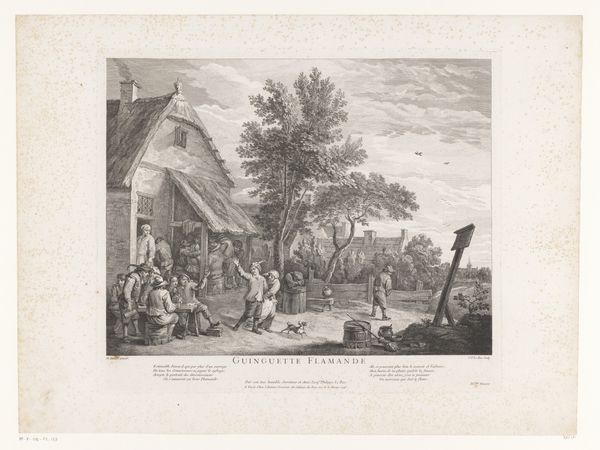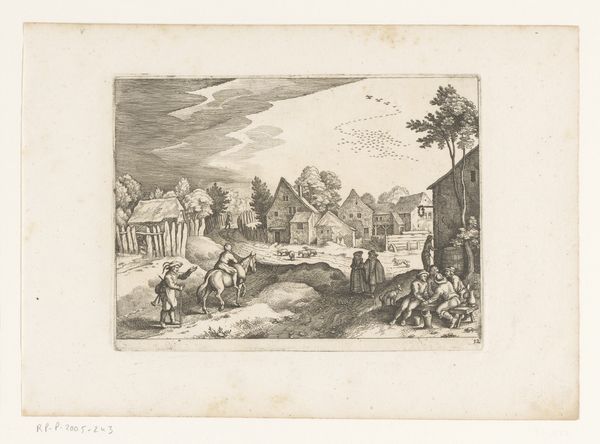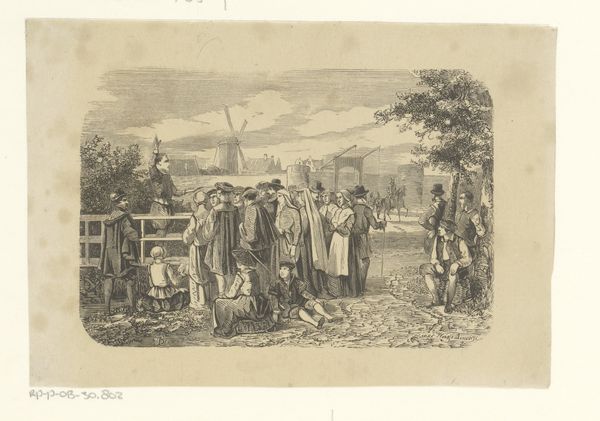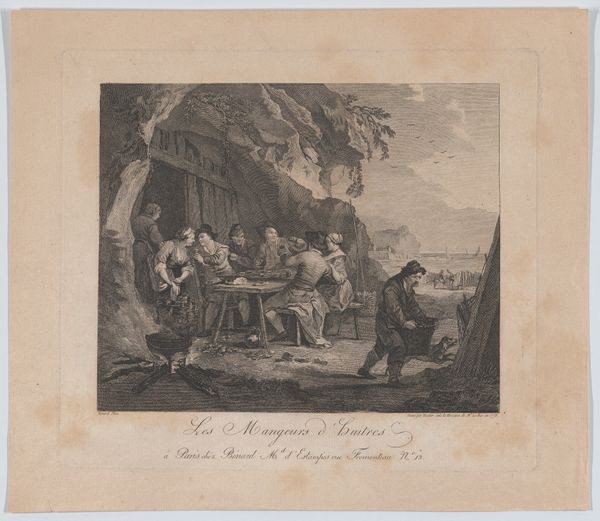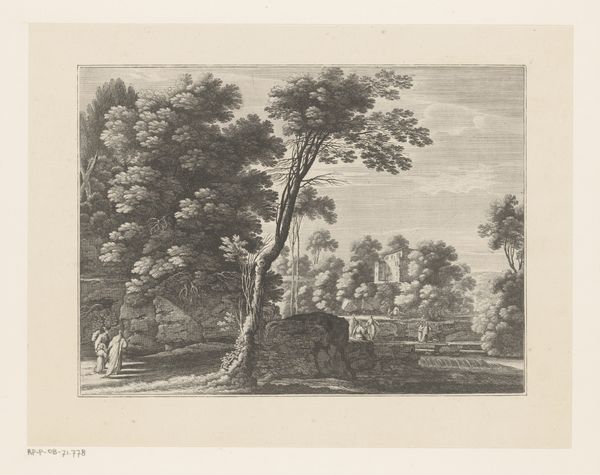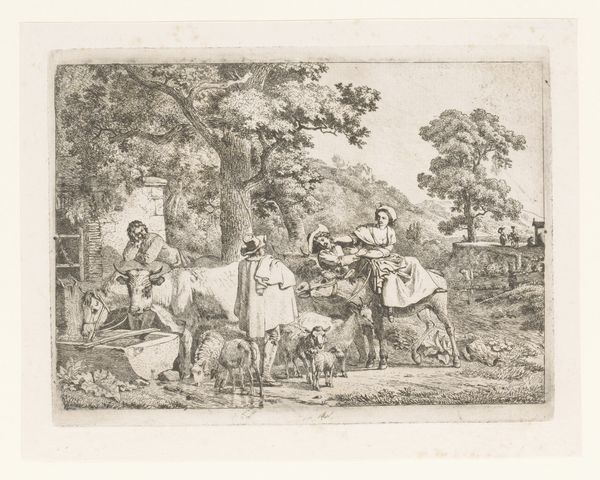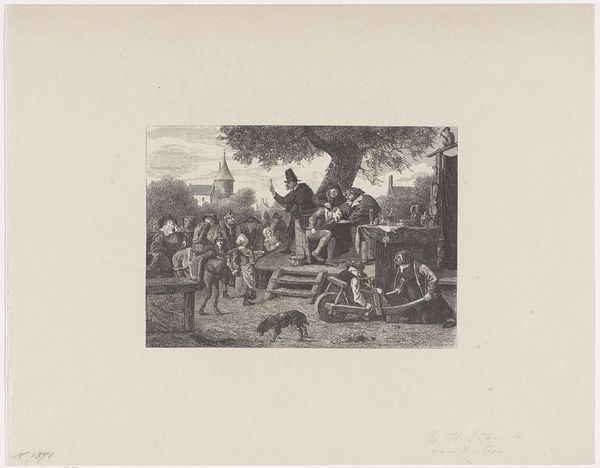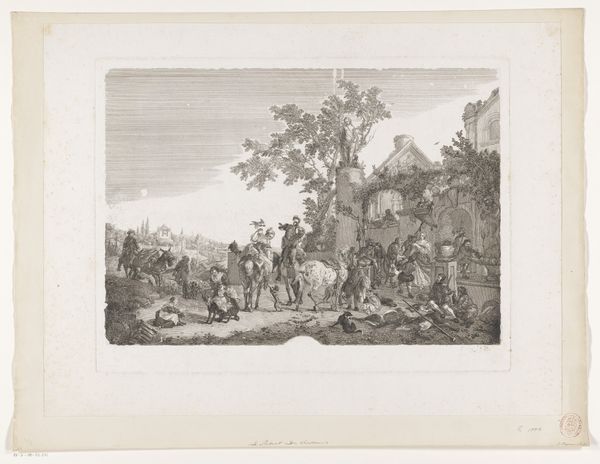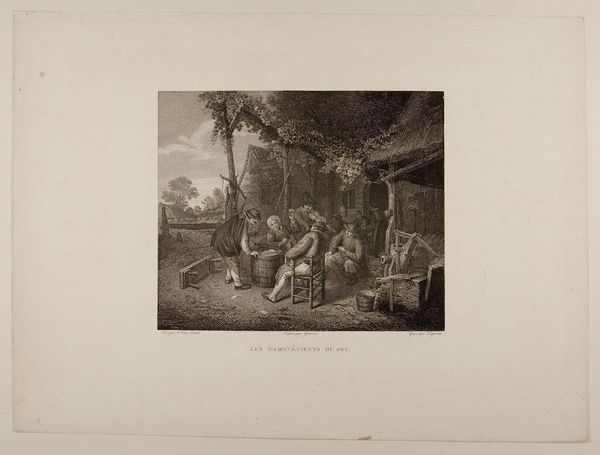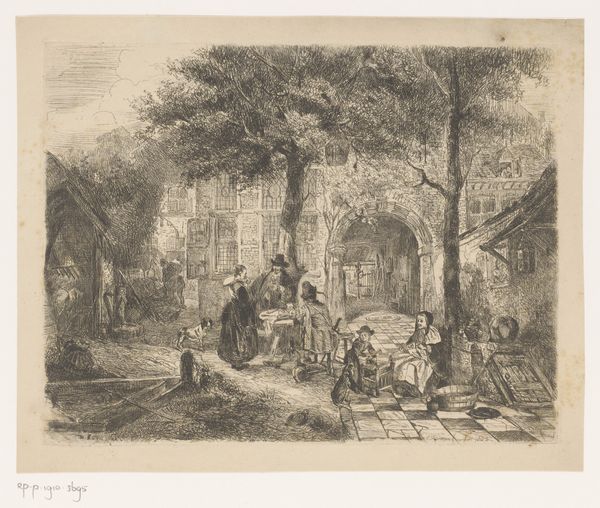
print, engraving
# print
#
landscape
#
genre-painting
#
engraving
Dimensions: height 258 mm, width 349 mm
Copyright: Rijks Museum: Open Domain
Curator: Well, this looks cozy, like a captured memory in monochrome. It feels like observing a gentle slice of village life, what do you think? Editor: This engraving by Willem Steelink II, entitled "Beugelbaan," dating from around 1888-1891, definitely evokes a sense of quaint domesticity, but also points towards the sociopolitical contexts that enable leisure for some while excluding others. Curator: That’s interesting... I see more of a relaxed pastime, with the players focused on the game. There’s something universally appealing about this simple form of connection. Editor: Absolutely. The act of leisure itself, though, becomes a site where power dynamics play out, isn’t it? We must interrogate whose leisure we are witnessing here. How class, gender, and even race operate within this seemingly innocuous scene. Who has the luxury of time for play? Who is missing from this picture? Curator: Okay, now you’re making me consider things I wouldn’t normally. But focusing on what is represented: the soft lighting in the garden, and the focused attention of each figure makes me feel nostalgic. Steelink II uses a lot of intricate detail to bring the textures to life: look at the details of the foliage on the tree, and compare with the worn appearance of the clothing, or the thatching of the shed. The engraving method definitely accentuates the rich tonal scale he creates. Editor: I concur regarding technique. By utilizing engraving, he's inherently engaging in a process that favors precision. And I appreciate that Steelink is capturing the spirit of Dutch social life beyond grand historical narratives. These unassuming moments reflect the social mores of the period and provide insights into daily life. But this idealized simplicity of the village scene, you have to also ask if it's masking some of the more systemic inequalities inherent in 19th-century Dutch society? Curator: Perhaps, yes, although personally I just love the gentle hum of contentment I perceive. Anyway, it gives us much to reflect on, and perhaps question. What looks tranquil at first viewing becomes much more complicated the more we consider its history and its context. Editor: Indeed. The image invites reflection not only on leisure and social harmony, but also the unacknowledged labour and exclusion that sometimes enables these tranquil moments. A perfect little document with far bigger implications.
Comments
No comments
Be the first to comment and join the conversation on the ultimate creative platform.
